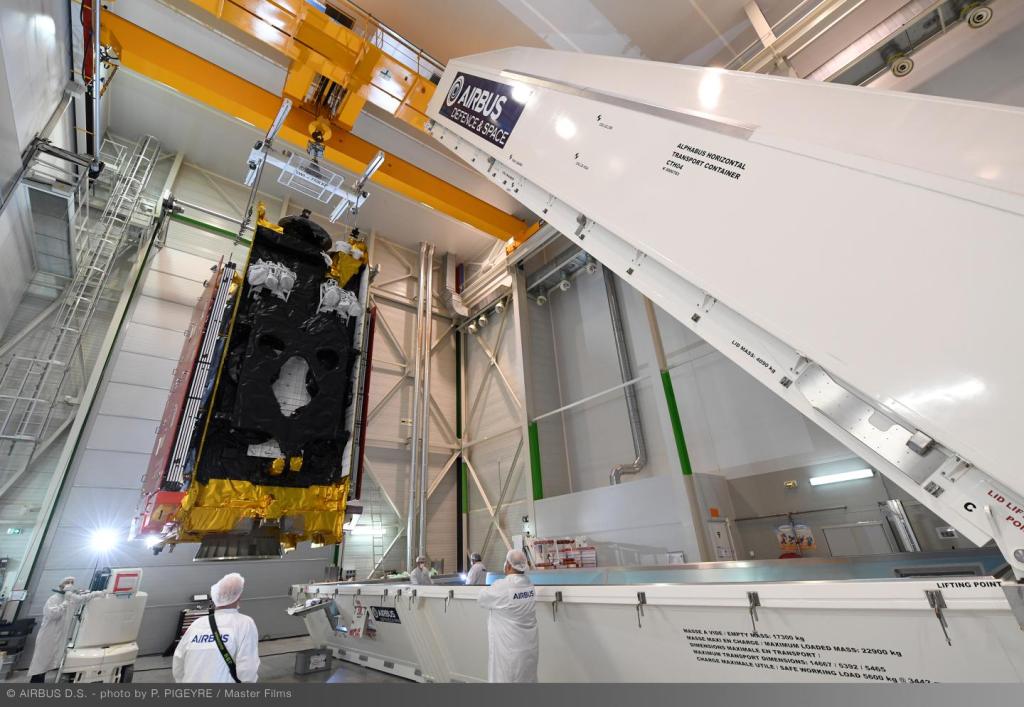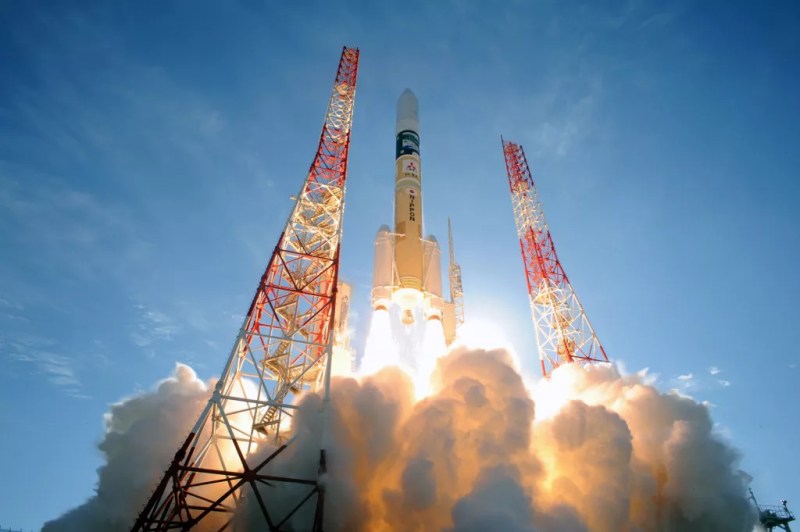Featured image credit: Mitsubishi Heavy Industries
Launch Window | December 21, 2021 – 14:33:52-16:33:26 UTC | 23:33:52-01:33:26 JST |
|---|---|
Mission Name | Inmarsat I-6 F1, H-IIA F45 |
Launch Provider | Mitsubishi Heavy Industries |
Customer | Inmarsat |
Rocket | H-IIA 204 |
Launch Location | Yoshinobu Launch Complex, Tanegashima Space Center, Japan |
Payload mass | 5,470 kg (12,060 lb) |
Where is/are the satellite(s) going? | Geostationary Earth Orbit (GEO) |
Will they be attempting to recover the first stage? | No, this is not a capability of the H-IIA |
Where will the first stage land? | It will crash into the ocean |
Will they be attempting to recover the fairings? | No, this is not a capability of the H-IIA |
Are these fairings new? | Yes |
How’s the weather looking? | TBD |
This will be the: | – 1st launch of a hybrid Inmarsat satellite (with both L-band and Ka-band support) – 26th Inmarsat satellite to launch – 45th flight of an H-IIA rocket – 135th orbital launch attempt for 2021 |
Where to watch | Official livestream (if available) |
What Does All This Mean?
Mitsubishi Heavy Industries (MHI) is launching a communications satellite to Geostationary Earth Orbit (GEO) for Inmarsat, the leading satellite communications company. This satellite, I-6 F1, is the first of two in the I-6 series of satellites, and is different from previous satellites operated by Inmarsat. This satellite will operate in both the L-band and Ka-band.
What Is Inmarsat?
Inmarsat is a UK-based company which since the 1970s has launched and operated a set of geostationary communications satellites at a range of longitudes. These satellites provide various services for marine and airborne traffic.

The satellite network covers the majority of the globe, apart from very high latitudes, i.e. coverage is complete from 82° South to 82° North. Sorry, Antarctica!
Inmarsat is now a private company, but owes its roots to the International Maritime Satellite Organization (INMARSAT for short). INMARSAT was created through the United Nations. It was superseded in 1999 by the International Mobile Satellite Organization (IMSO), and at this time the operational part of the old organization was transferred to Inmarsat Ltd, based in London.
Services
Inmarsat provides support for, amongst other services:
- voice telephone calls
- low bandwidth communications on the Global Broadband Area Network (BGAN) via General Packet Radio Service (GPRS)
- faster Internet access via Global Xpress (up to 50 Mbit/s)
- FleetBroadband, a maritime service based on BGAN technology
- SwiftBroadband, an aeronautical service also based on BGAN technology
Telephone devices supported by Inmarsat are all allocated a number with country code 870. Prior to December 2008, each global region had its own individual country code.
Flight MH-370
On March 8, 2014, Malaysian Airlines flight MH-370 disappeared during a flight from Kuala Lumpur to Beijing. Military radar systems of several countries tracked the flight for a period of time after communications from the aircraft ceased. However, once the military radars could no longer track the aircraft, all information as to its subsequent fate appeared to be lost.
However, the aircraft had on board a “Classic Aero” satellite data unit fitted, which continued to function for several more hours. Inmarsat data systems in London recorded “pings” (short handshake messages) between this unit and an Inmarsat satellite over the Indian Ocean Region (64° East). Inmarsat specialists looked at the encoded information in relation to these pings. This allowed them to conclude that the aircraft turned to the South and continued to fly onward for another 7 hours.

Because the satellite was flying in a “figure of 8” formation above the point on the equator at 64° East, very subtle differences in timing and frequency of these messages could be recorded. Analysis of these differences were used to prove that the aircraft was last airborne over the Southern Indian Ocean, near Australia.
What Is The H-IIA?
The H-IIA center booster is a liquid hydrogen (LH2)/ liquid oxygen(LOX) fueled rocket, with a single LE-7A engine running on a staged combustion cycle.
The upper stage also uses LH2 / LOX (this allows for common ground support equipment, which is good) and a single LE-5B engine, which uses the expander bleed cycle. This involves cooling the rocket nozzle and combustion chamber using just some of the propellant, whilst simultaneously warming up this portion of propellant, converting it from liquid form to gaseous form so that it can be used in the turbine to drive the turbopump. On exit from the turbine, this gaseous propellant is treated as exhaust and it does not undergo combustion.
So what does the 204 number mean? Well, the H-IIA has four different configurations, with different numbers and types of side boosters and payload fairing, depending on the mass/volume of the overall payload. In all four cases, there are at least two solid rocket boosters (SRBs) strapped on either side of the center core. The center core, and 3 out of 4 fairing types listed below, all have a 4 meter diameter.
Configurations
Here is a breakdown of the different launch configurations:
- 202 – this just has the regular 2 SRBs, and a 4S fairing (53 m length)
- 2022 – this has the same 2 SRBs, but also has 2 different solid strap-on boosters (SSBs), and the same 4S basic fairing
- 2024 – this has the same 2 SRBs, but also has 4 different solid strap-on boosters (SSBs), and an extended length 4/4D-LC fairing (57 m)
- 204 – this has 4 of the regular SRBs, but no SSBs, and an extended diameter 5S fairing (53 m length, but 5 meter fairing)
Because of the extra initial boost of the 2024 and 204 configurations, the main center booster has a longer nozzle that is slightly more of a hybrid between sea level and vacuum, when compared with the standard seal-level nozzle shape on the 202 and 2022. The underlying motor (turbo-pumps and combustion chamber) is the same in all four cases.

Here is a breakdown of the different launch configurations:
Two other launch configurations were planned, but were canceled without ever being used. IHI Corporation of Japan makes the the SRBs, which are technically named “SRB-A”. The SSBs, however, are Castor 4A-XL motors, built by Northrop Grumman Innovation Systems (NGIS), formerly Thiokol, in the USA.
H-IIA, which first flew in 2001, is an expendable launch system. Mitsubishi Heavy Industries (MHI) operates this rocket for JAXA. The liquid-fueled H-IIA rockets can put satellites into geostationary orbit, launch spacecraft capable of going to lunar orbit, and has even launched Akatsuki, which went to the planet Venus.




